Washington Capitals: Top 10 worst seasons in team history

It’s been fun being a Washington Capitals fan but it’s also been very difficult.
From playoff heartbreaks, to pandemics, to just downright crappy seasons, we’ll take a look at the worst of the worst in terms of the worst seasons in Capitals history.
There’s been a lot to choose from in their 47 seasons thus far. If you want a more positive spin on things, don’t worry, we’ll be looking at the 10 best seasons in team history soon.
But for now, let’s look at the worst seasons in team history. Try and make it through the whole slideshow without vomiting.
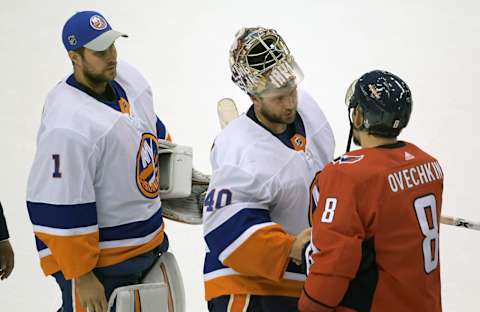
#10 2019-20
Even though the Capitals won the Metropolitan Division and Alex Ovechkin was on fire and started to make us believers that he would catch the record someday, this was a horrible season. Why?
COVID 19.
Yup this was honestly a bad season for 30 NHL teams except one and we all know who that team was and it ain’t us. When COVID struck and spread rapidly the sports world including the NHL had to shut down.
We had to wait almost FIVE months just for the Caps to come back and get bounced in the first round by the New York Islanders and former bench boss Barry Trotz.
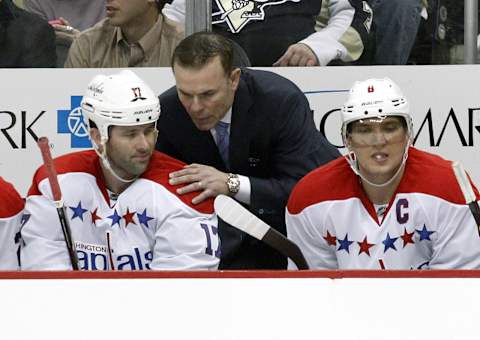
#9 2013-14
This was a rare year where the Capitals missed the playoffs entirely in the Rock the Red era. It was the final year of the Adam Oates era and he was simply a bad coach. Was he worse than Todd Reirden? Maybe.
The Caps finished 38-30-14 with 90 points and a fifth place finish in the brand new Metropolitan Division. Alex Ovechkin had 51 goals that season so it wasn’t quite his fault. Joel Ward and Troy Brouwer also had good years with 24 and 25 goals, respectively.
The Caps lost all three of their games to the Pittsburgh Penguins that year. Anytime you get swept by the Penguins it’s a bad year. I don’t even think Oates got a single win against the Penguins during his time coaching the Caps.
Okay I looked, I was correct. Oates went 0-5 against the Penguins.
The Caps were decent at home that season with a respectable 21-13-7 record. But the road was what did them in as they went 17-17-7. Ouch.
What also did the Caps in that year was their atrocious defense. And it was bad from the get go. They allowed four or more goals in seven of their first 20 games.
The problem with the offense was after it got off to a hot start it cooled off. Even though Ovechkin had 51 goals he still had a plus minus of minus 35. They also relied way too much on the power play.
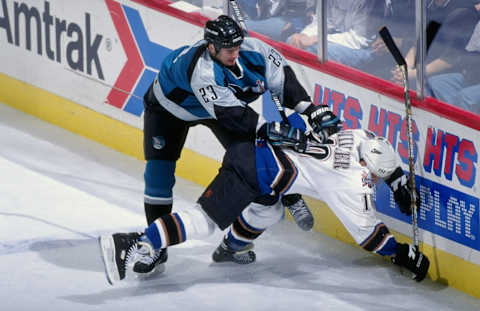
#8 1998-99
The year after the Caps made it to the Stanley Cup Final for the first time in franchise history, the team fell flat. They finished 31-45-6 with 68 points. Peter Bondra led the Caps with 31 goals and 24 assists for 55 points. Adam Oates added 12 goals and 42 assists for 54 points.
The Caps started the season strong raising the banner of Eastern Conference Champions and shutting out the Mighty Ducks of Anaheim 1-0 behind 29 saves from Olaf Kolzig.
That season also included a highlight of Peter Bondra scoring four goals in a 10-1 route of the Tampa Bay Lightning. In March that season the Caps traded their captain Dale Hunter, Joe Juneau (the hero who scored the overtime goal that took the Caps to the Stanley Cup Final the previous year) and Craig Berube.
A month after the season ended Abe Pollin announced that he sold the Capitals to Ted Leonsis.
The Caps got shut out a league high 11 times that season. They also tied the St. Louis Blues for the fewest power play opportunities with 301. They also led the NHL in man games lost to injury with 511.
Leonsis didn’t quite inherit a mess. But the Caps were bad the season before he took over due to those injuries.
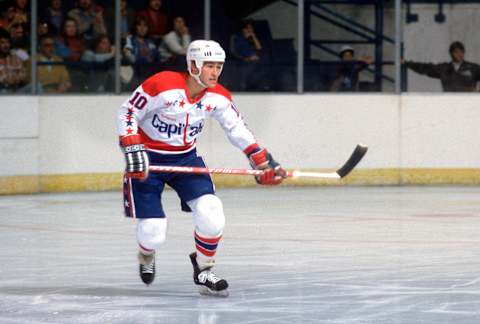
#7 1981-82
The 1981-82 Capitals were the last team that was bad before they made the playoffs for the first time. They finished fifth in the Patrick Division with a 26-41-13 for 65 points.
That year Dennis Maruk had a breakout season with 60 goals and 76 assists for 136 points. Ryan Walter added 38 goals and 49 assists for 87 points. Mike Gartner had 35 goals and 45 assists for 80 points. Bob Carpenter had 32 goals and 35 assists for 67 points.
That was Carpenters rookie season as they drafted him with the third overall pick. At the time he was the first player from the United States to go that high in the draft.
How bad were the early Capitals teams? Very bad. They started that season with a loss to the Buffalo Sabres. After winning their second game against the Detroit Red Wings the Caps went on to lose 13 straight.
That streak ended with a tie against the Red Wings. They then went on to win four in a row. The Caps ended that season wining two games in a row.
The Caps weren’t terrible but they weren’t good either. They scored 319 goals which was ranked 10th out of 21 teams. Goals against was 338 which was ranked 12th.
This was the eighth Capitals season and the final one where they were really bad before they started making the playoffs consistently.

#6 2001-02
The Caps finished above .500 with a 36-33-11-2 record with 85 points finishing second place in the Southeast Division. Despite this, the Caps missed the playoffs, finishing ninth in the Eastern Conference.
Heading into the season the Capitals made a big splash by trading for Jaromir Jagr. Expectations were sky high, ticket sales were through the roof, and fans thought Jagr along with Adam Oates, and Peter Bondra would dominate the entire league.
It didn’t quite work out that way. They ended the 2001 portion of the schedule with a 15-17-7-0 record. They heated up in 2002 but Leonsis and General Manager George McPhee realized they needed an on the fly retool.
At the deadline they dealt Oates to the Philadelphia Flyers in exchange for goaltender Maxime Ouellet and the Flyers first, second and third rounders in the 2002 Draft.
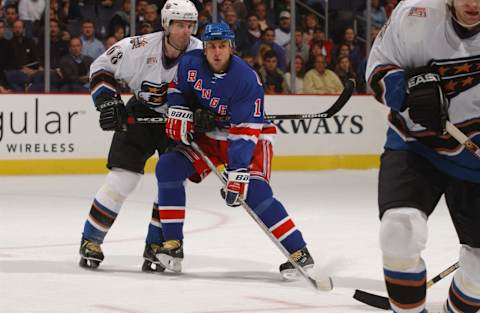
The Caps ranked ninth in the NHL in goals scored with 228 but ranked 25th in goals allowed with 240. Only seven players that skated in at least 30 games didn’t have a negative plus minus rating. This was a season that was similar to 2013-14.
There were some bright spots as Jagr still was one of the league’s leading point getters despite not putting up numbers like he did with the Penguins and later on with the New York Rangers.

#5 1996-97
The 1996-97 Capitals missed the playoffs and finished with a 33-40-9 record for 75 points. They finished in fifth place which wasn’t last place as there was seven teams in the Atlantic Division but it was still pretty bad.
Peter Bondra led the Caps with 46 goals and 31 assists for 77 points. Dale Hunter added 14 goals and 32 assists for 46 points. Steve Konowalchuk had 17 goals and 25 assists for 42 points. Joe Juneau had 15 goals and 27 assists for 42 points.
The Caps had failed to make the playoffs after finishing ninth in the Eastern Conference. It was the first time they had missed since 1992. It was also their last full season playing at the Capital Centre which was also called USAir Arena.
The Caps finished with 214 goals for which was 23rd of 26. Goals against was 231 which was ranked ninth so as you can see from those rankings and the stats up above the defense was clearly better than the offense.
The Caps really struggled in the month of December of that season. That was where they lost six of seven games and the other one wasn’t even a win, it was a tie.
Luckily the team would bounce back the next season in a big way, advancing to to the Stanley Cup Final.
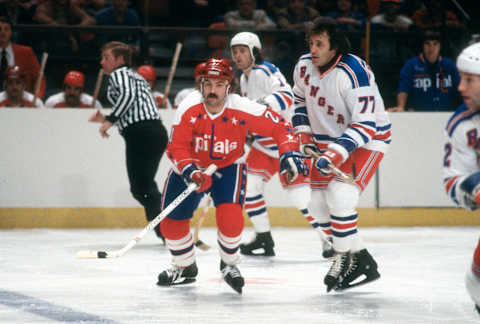
#4 1975-76
The second season of the Capitals saw them win just 11 games. They went 11-59-10 with 32 points. Nelson Pyatt led the team with 26 goals and 23 assists for 49 points. Hartland Monahan added 17 goals and 29 assists for 46 points.
Tony White had 25 goals and 17 assists for 42 points. Ace Bailey added 13 goals and 19 assists for 32 points. White had two hat tricks while Monahan had one against the hated Pittsburgh Penguins.
The Caps also had three goalies that season. Ron Low went 6-31-2 with a 5.46 goals against average and a .854 save percentage. Bernie Wolfe went 5-23-7 with a 4.17 goals against average and a .886 save percentage. Michel Belhumeur went 0-5-1 with a 5.11 goals against average and a .860 save percentage.
Five of the Caps 11 wins came on the road. They did better offensively than they did in their first season (more on that later, trust me, it’s coming), by scoring 43 more goals. That’s an increase of 24 percent.
However, for the second straight year the Caps allowed the most goals in the NHL with 394 surrendered. They also set a club record for most games without a win at the start of a season as they went winless in their first nine games.
The lowest stretch of the entire season was a 25 game winless drought. That spanned 57 days and cost general manager and head coach Milt Schmidt both of his jobs.
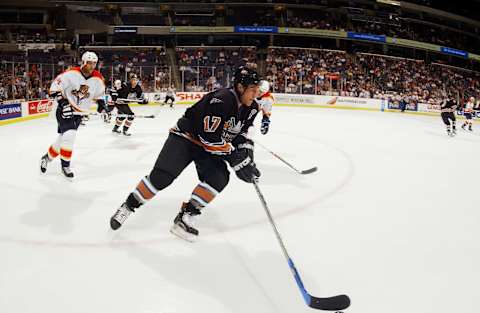
#3 2006-07
This was Alex Ovechkin’s second season and he had a sophomore slump where some “experts” thought the team should trade him and start over. People actually still thought that in 2017. What a joke.
The Caps finished 28-40-14 with 70 points. Ovechkin still finished with a respectable 46 goals and 46 assists for 92 points. Alexander Semin had a breakout year with 38 goals and 35 assists for 73 points and a couple of overtime winners.
Chris Clark also had a good season with 30 goals and 24 assists for 54 points while Dainties Zubrus added 20 goals and 32 assists for 52 points. Olaf Kolzig went 22-24-6 with a 3.00 goals against average and a .910 save percentage. Brent Johnson went 6-15-7 with a 3.62 goals against average and a .889 save percentage.
This was the last season in which they used their blue, black, and bronze color scheme. They’ve been rocking the red ever since. There was some highlights like Ovechkin getting the second hat trick of his career in a game on Dec. 15, 2006.
Ovechkin scored all three goals in that contest against the Atlanta Thrashers. The third goal was scored just six seconds into overtime which tied Mats Sundin and David Legwand for the fastest regular season over time goal scored.
This was the last dark time for the franchise before they competed for the playoffs nearly every season since.
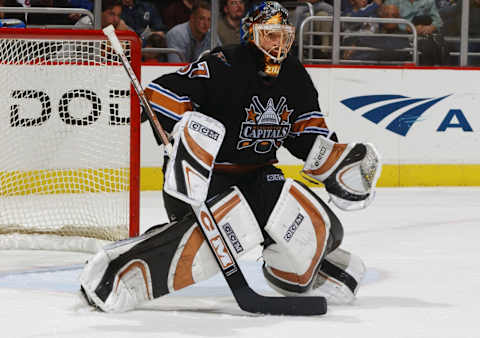
#2 2003-04
The 2003-04 Capitals were a complete disappointment after they got bounced in the first round the previous season against the Tampa Bay Lightning.
Robert Lang led the Caps with 29 goals and 45 assists for 74 points. Sergei Gonchar added seven goals and 42 assists for 49 points. Jeff Halpern scored 19 goals and added 27 assists for 46 points. Jaromir Jagr had 16 goals and 29 assists for 45 points.
The Caps were the most penalized team that season with 401 power play opportunities against. They also scored the fewest shorthanded goals with just four.
Although this was a bad season, the Capitals won the NHL Draft lottery which allowed them to take Alex Ovechkin with the number one pick in 2004. The rest as they say is history.
Leading up to 2003-04 the Caps had stacked their roster with high price veterans in hopes of gunning for a Cup. They went from 92 points the previous year to 59 with a 23-46-10-3 record.
The Caps lost seven of their first eight games and 24 out of 38 before the season ended. George McPhee traded away players beginning toward the end of October and went for a complete fire sale at the trade deadline. Bruce Cassidy would also be fired and replaced by Glen Hanlon.
The Caps parted ways with many of their fan favorites including Steve Konowalchuk and Peter Bondra. Despite this the silver lining is that the tanking worked in a big way.
#1 1974-75
In the inaugural Caps season it was a season their fans wanted to forget. The season was so bad on a random win on March 28, 1975 they skated around with a trash can like it was the Stanley Cup. Not joking.
The Washington Post said the next day: “The Washington Capitals won a road hockey game. Honest.” in their story about the game. This was after a 5-3 win over the California Seals in front of 3,933 fans in Oakland.
It was their only victory on the road. One win and 39 losses. They set the NHL record for fewest wins in a first season with just eight. They had 67 losses which was the third most in NHL history. Their longest losing streak was 17 games.
Goalie Ron Low who recorded the win in Oakland said this to the media:
“That was our Stanley Cup. We came into the dressing room and the trash can was tall and skinny, so guys just started lifting it up and parading it around. Ace Bailey, one of the great jokesters of all time, took it after everybody signed it and twirled the rink with it. It was the most hilarious thing.”
Related Story. 3 past Capitals offseason deals that led to postseason success. light
The first season was easily the worst season in Capitals history. Hope you made it through this entire slideshow without vomiting.